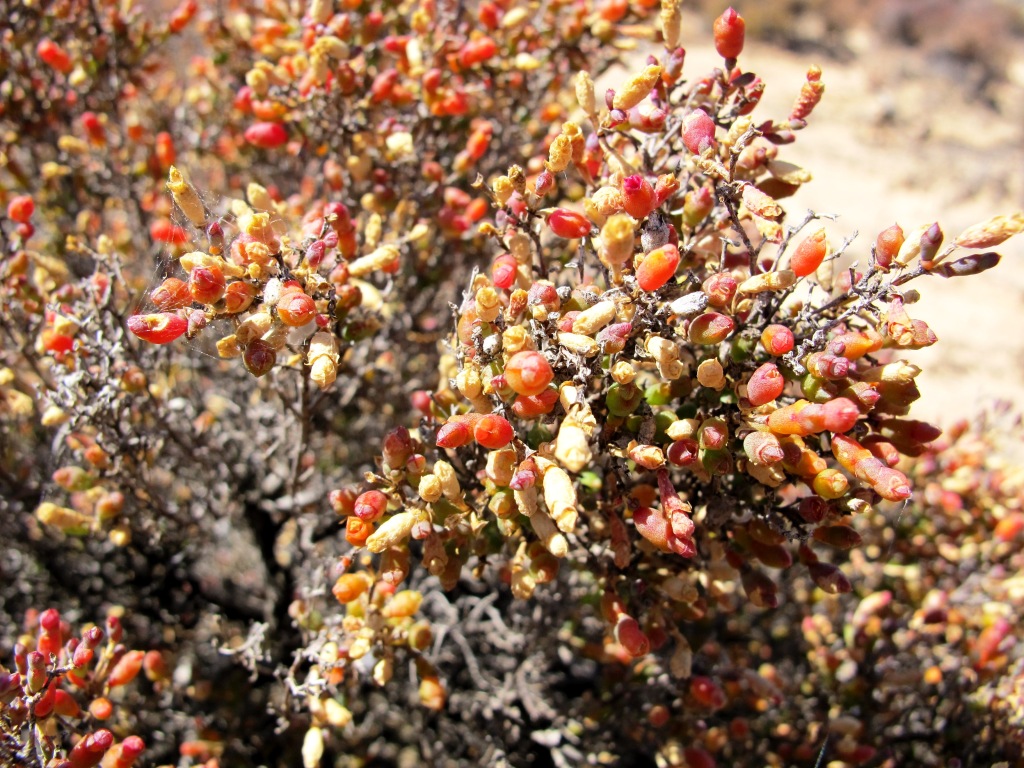Tecticornia moniliformis
(Paul G.Wilson) K.A.Sheph. & Paul G.WilsonIntricately branched shrub to c. 1 m high. Articles of ultimate branches obovoid, 3–7 mm long, dull grey-green; lobes acute, narrowly keeled, erect or spreading, margins entire. Spikes terminal or vegetative growth continuing, 6–15 mm long, comprising 1–6 (usually 2 or 3) articles similar to vegetative ones; flowers fused to each other in lower part, free from bracts. Fruiting spike persistent, often appearing beaded, with articles pale, broadly obovoid to spherical, 3–6 mm diam., dry and pithy; fruiting perianth membranous, pericarp papery, narrowly ovoid and shortly beaked at apex; style weak, not exserted; seed elliptic or somewhat reniform, c. 1.5 mm long; articles of mature spike eventually disintegrating and falling with fruit enclosed. Flowers recorded Feb.–May.
LoM, MuM, Wim, EGL. Also WA, SA. In Victoria rare and confined to margins of a few salt lakes and nearby low ridges of sandy clay loams in the far north-west (Raak Plain, Nowingi area, Pink Lakes, Boinka area), but locally dominant in samphire communities.
The apparently disjunct distribution of this species (south-western Western Australia, Eyre Peninsula and Yorke Peninsula in South Australia and north-western Victoria) suggests that it may have been overlooked in similar situations in intervening country and possibly in New South Wales.
Walsh, N.G. (1996). Chenopodiaceae. In: Walsh, N.G.; Entwisle, T.J., Flora of Victoria Vol. 3, Dicotyledons Winteraceae to Myrtaceae, pp. 129–199. Inkata Press, Melbourne.
 Spinning
Spinning

